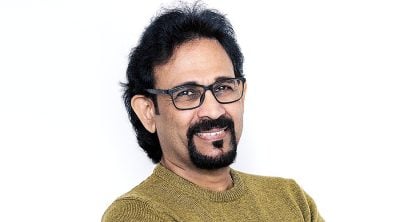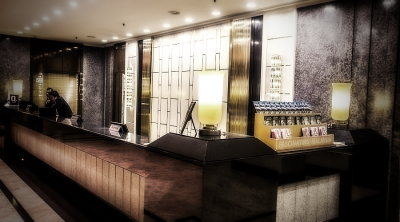
Kuala Lumpur, Malaysia’s vibrant capital, is facing an increasing threat from flash floods that seem to worsen with every monsoon season.
The heavy rain that hit the city several days ago turned roads into rivers of murky yellow water, disrupting lives, damaging properties, and leaving many stranded.
With rivers overflowing and sinkholes emerging, this recurring situation is alarming for residents and businesses alike.
As we head deeper into the monsoon season, it is imperative that both the government and Kuala Lumpur City Hall take decisive action to prevent further paralysis of our transportation network and damage to the economy.
Rivers at the heart of issue: Klang, Gombak and beyond
Central to the flooding problem in Kuala Lumpur are its rivers, particularly the Klang and Gombak rivers.
These rivers have overflowed their banks time and again, turning streets into temporary waterways and causing widespread disruption.
While the deepening of these rivers has been part of long-term flood mitigation plans, progress seems to be slow.
Additionally, the other rivers such as Batu River, Kerayong River and Ampang River also contribute to the overflow during heavy rainfalls.
To bring the situation under control, immediate and long-term actions need to be taken.
Understanding the state of these rivers and enhancing their capacity to cope with heavy rainfall is crucial.
Immediate measures to mitigate flooding
1. Expanding drainage capacity: The drainage systems in Kuala Lumpur are not able to handle the current volume of rain, particularly during the monsoon.
Immediate measures should include the clearing and desilting of drains to increase capacity. Blocked drains, clogged by debris, contribute significantly to flash floods.
Kuala Lumpur City Hall (DBKL) and local authorities need to prioritise maintaining these drainage networks, especially in flood-prone areas.
Deploy every team from enforcement or even the military to check every drain, every monsoon drains, streams and rivers, conducting physical and drone checks so as to ensure the city’s capillaries are clean and clear.
2. Flood barriers and mobile pumps: Temporary flood barriers can be deployed in strategic locations to prevent rivers from overflowing into the streets.
Mobile pumps can also be stationed in vulnerable areas to drain water from roads and low-lying areas, preventing water from accumulating and turning the city into a standstill.
The Drainage and Irrigation Department and Dewan Bandaraya Kuala Lumpur with the help of the military platoon, can surely address and mark these points to prevent the overflowing of flood waters.
3. Enhanced early warning systems: An efficient early warning system can alert residents and commuters in advance of potential flooding, allowing them to take preventive actions.
While there are warning systems in place, these need to be improved to cover more areas, and communication with the public must be clearer and more frequent, particularly through mobile apps and social media platforms.
The Malaysian Meteorological Department must be more proactive and issue daily notice rather than issuing it in the morning, stating it will flood today evening.
The announcement must be at least three days in advance.
4. Traffic and public transport management: During heavy rainfall, traffic management becomes crucial.
Immediate traffic diversion plans must be in place to prevent massive congestion. More importantly, improving public transportation options during floods will help ease the pressure on the city’s roads, preventing traffic paralysis.
Deploy more traffic police and even the military personnel to control the chaos, especially lady drivers and old folks stuck in their vehicles during the flood.
5. Public awareness and preparedness: Citizens should be educated on flood preparedness. Whether it’s keeping their vehicles safe, avoiding flood-prone areas, or knowing where to seek assistance, public campaigns can help reduce the overall impact of floods.
Encouraging the public to report blocked drains or overflowing waterways can also help authorities act faster.
Social media, radio and television stations should work hand in hand to ensure awareness level is heightened alerting the public.
Long-term flood mitigation strategies
1. River deepening and widening projects: The Klang River and Gombak River have been undergoing deepening projects to increase their capacity to handle floodwaters.
However, more needs to be done, and the project timelines should be accelerated.
Beyond deepening, widening certain sections of these rivers can prevent them from overflowing during heavy rain.
Other rivers in Kuala Lumpur, including Batu River, Kerayong River and Ampang River should be included in these efforts, ensuring that flood mitigation plans are comprehensive and address the interconnectedness of the city’s waterways.
The river beautification program is still being delayed. The project must be hastened to ensure our rivers are not our dump yard, but a treasure trove of our city.
2. Building retention ponds: Retention ponds play a critical role in absorbing excess rainwater. More of these ponds need to be built in flood-prone areas to prevent rainwater from overwhelming the city’s drainage systems.
These retention ponds could also be integrated with green spaces and parks, creating dual-purpose recreational areas that serve as a flood management measure during heavy rain.
Bukit Jalil Golf and Country resort, Bandar Malaysia, Sri Hartamas are some of the retention ponds which were relocated for private developments. Now the debate on the Puchong retention pond is on-going.
There must be a task force responsible, comprising DBKL, DID, NGO’s and JKR to ensure a comprehensive study is made and no more retention ponds sold or degazetted for development.
3. Smart city infrastructure: Kuala Lumpur needs to embrace smart city technologies to better manage floods.
Real-time monitoring of river levels and rainfall data through sensors can help authorities respond swiftly to rising waters.
Cities around the world are already using artificial intelligence to predict flood patterns and make informed decisions about flood management.
Kuala Lumpur should follow suit by incorporating these advanced tools.
We had a Smart City Conference in Kuala Lumpur about four years ago, and I wonder what we are following and what is our takeaway from this great event organised with the United Nation.
4. Revitalising urban planning: Urban sprawl and overdevelopment have worsened the flood situation in Kuala Lumpur.
The loss of natural floodplains and green areas means rainwater has fewer places to go.
Revamping urban planning policies is a long-term solution that will address the root cause of the problem.
Future developments should incorporate flood mitigation designs, including permeable pavements, green roofs and rain gardens that allow water to seep into the ground rather than run off into drains.
5. Community involvement in flood solutions: Building a resilient city requires the involvement of local communities.
Empowering communities to adopt flood mitigation strategies such as setting up neighbourhood water management systems or engaging in tree planting to enhance green areas can create a long-lasting impact.
Bring in all public-listed companies and apportion Klang and Gombak rivers to each of the companies and organise a competition to select who does the job best in landscaping or beautifying the river banks.
This will certainly work as sustainability is not merely a boardroom or Bursa report for these public-listed companies.
6. Climate change adaptation: The monsoon seasons are expected to become more intense due to climate change.
Addressing the impact of these changes on Kuala Lumpur’s flood patterns is vital.
Climate adaptation strategies, including redesigning infrastructure to withstand extreme weather events and creating nature-based solutions are crucial components of any long-term flood management strategy.
No development is to be approved without considering the impact on climate.
This has to be seriously mandated to all by the government and local authorities.
Time for swift and coordinated action
Kuala Lumpur cannot afford to be submerged under water every monsoon season.
Flooding affects not just infrastructure but also the economy, livelihoods, and the well-being of citizens.
While short-term measures like expanding drainage capacity and installing mobile pumps can help in the immediate future, long-term solutions that focus on river deepening, urban planning and climate change adaptation are essential to ensure that the city remains resilient against future floods.
The government, local authorities, public-listed companies and citizens must work hand in hand to safeguard Kuala Lumpur against the rising waters that threaten our national capital.
Enough of frequent floods, we NEED ACTION!

(Ravindran Raman Kutty is an active social worker.)
ADVERTISEMENT
ADVERTISEMENT








































